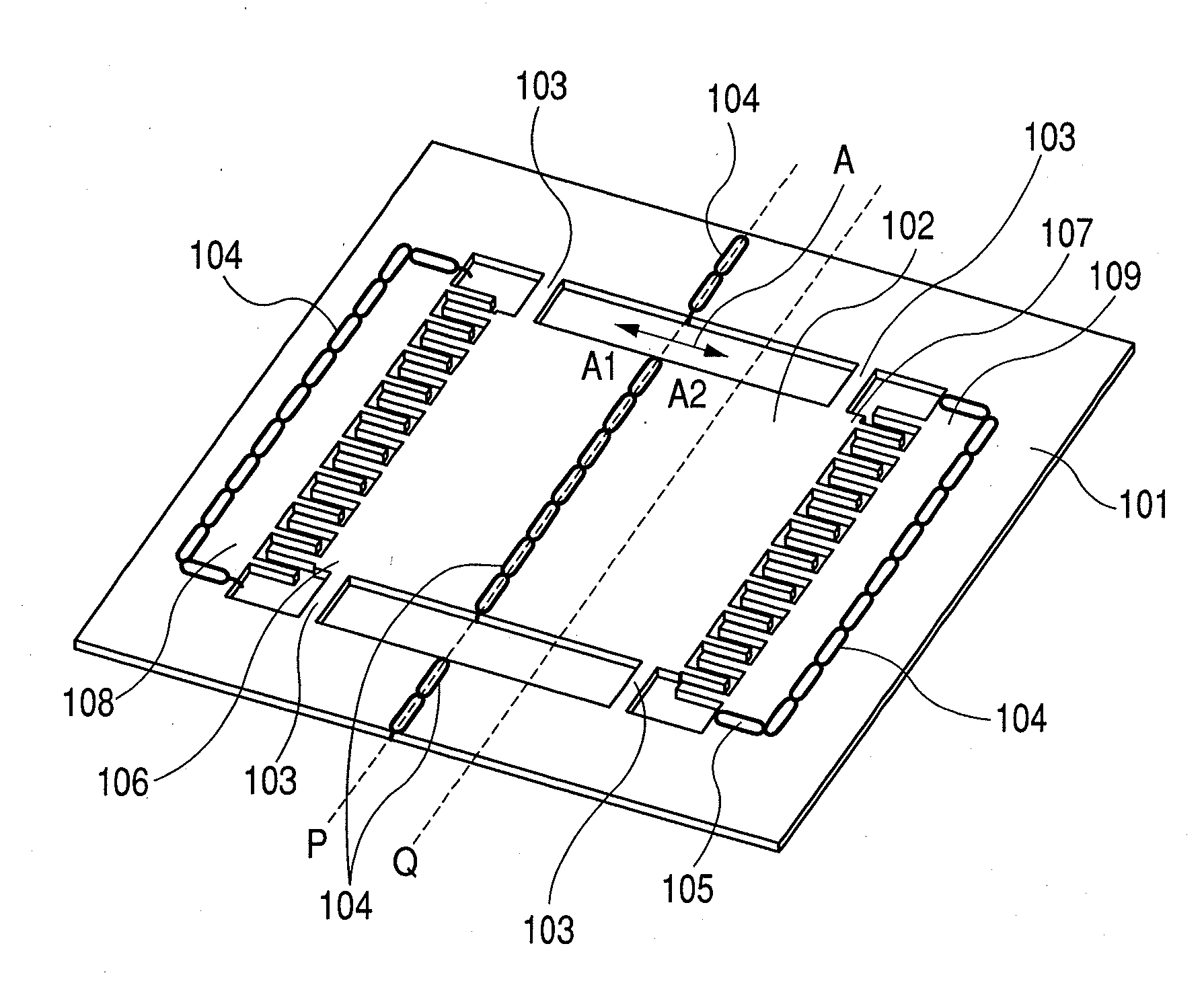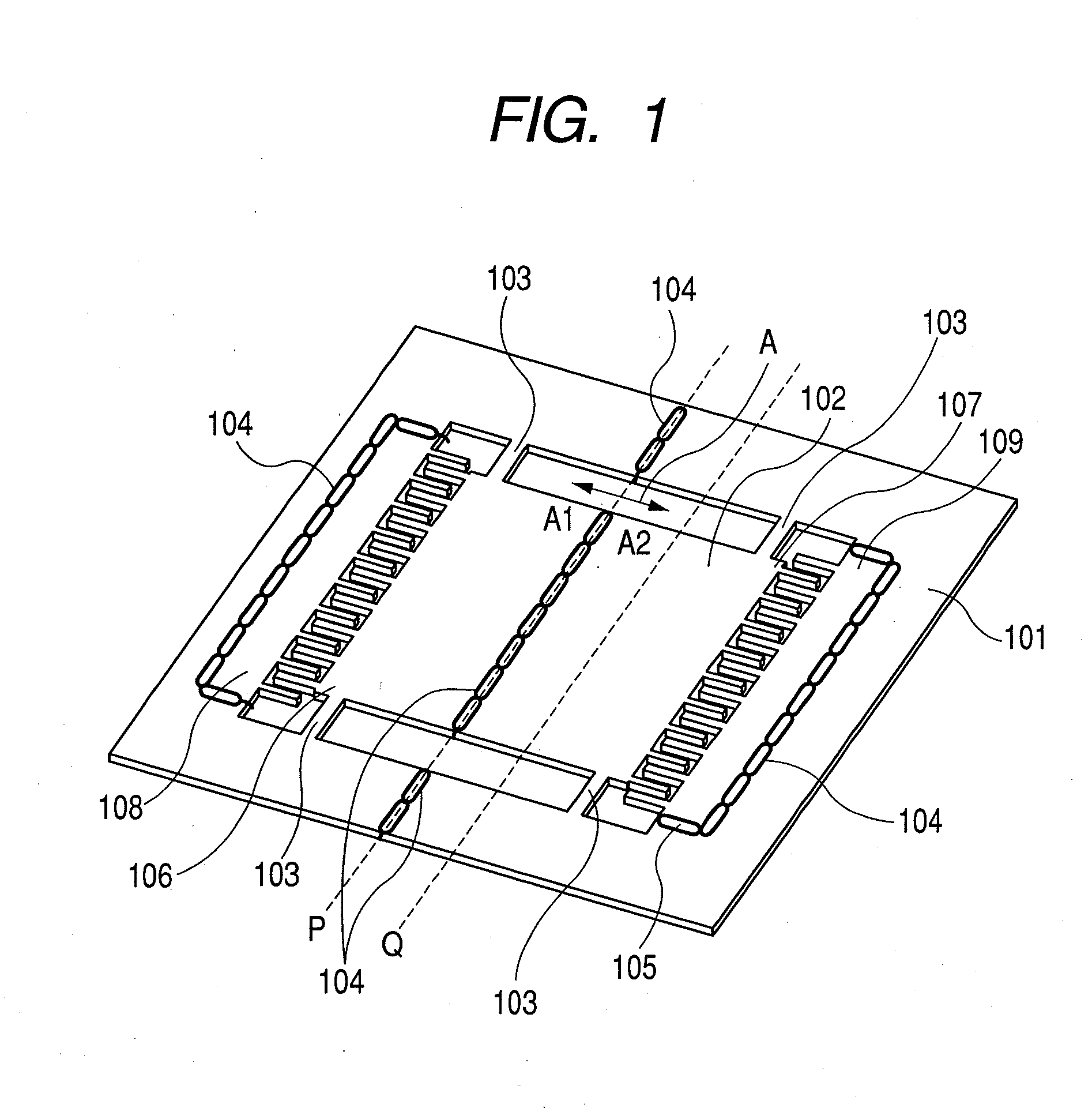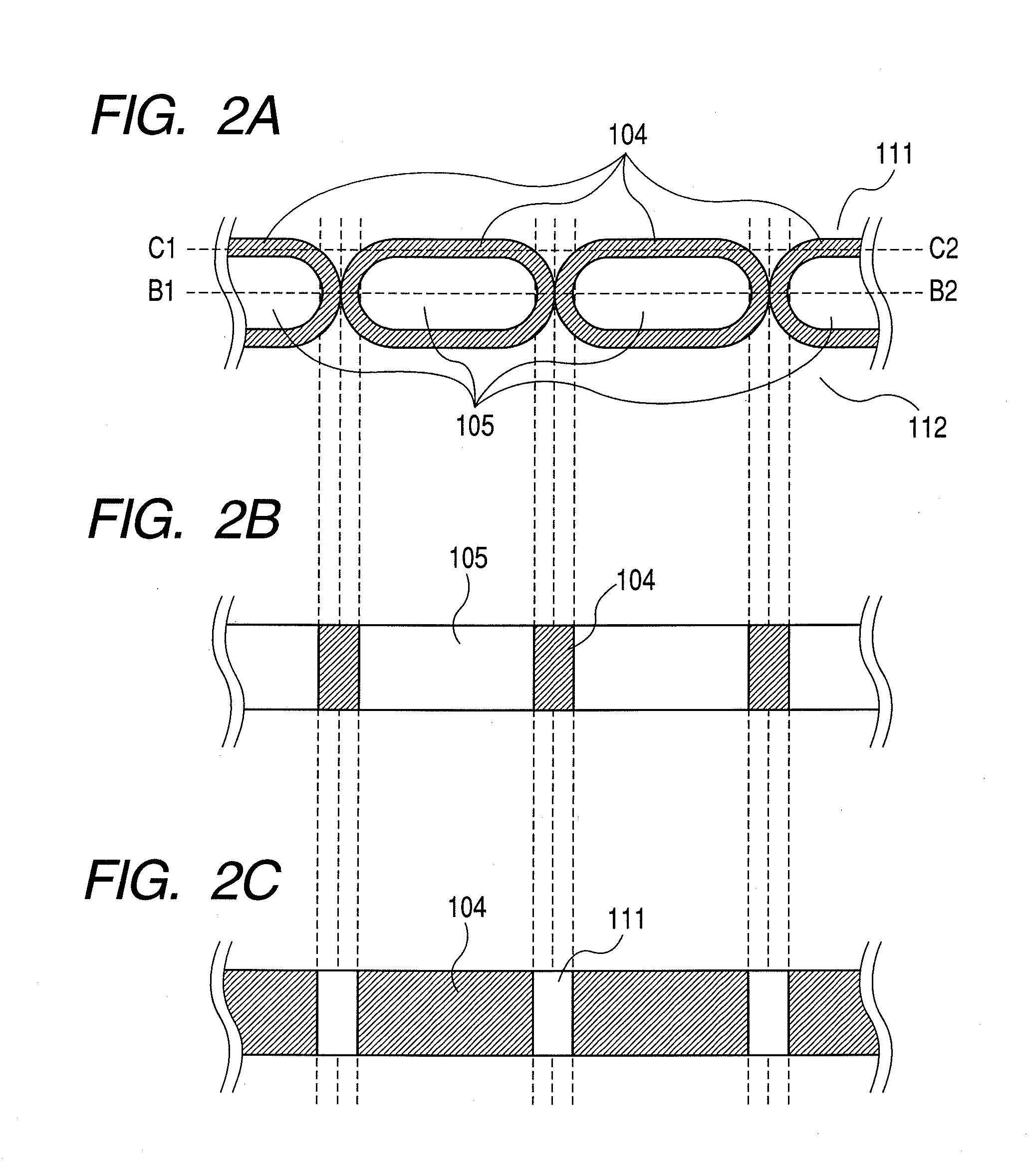Structural member having a plurality of conductive regions
- Summary
- Abstract
- Description
- Claims
- Application Information
AI Technical Summary
Benefits of technology
Problems solved by technology
Method used
Image
Examples
first embodiment
[0046]A first embodiment of the present invention will be described with reference to FIGS. 1, 2A, 2B, 2C, 3-1A to 3-5B, 4A, 4B, and 4C. The first embodiment of the present invention relates to an actuator (mechanism for converting a force of input electric energy into physical motion) including a structural member having a plurality of conductive regions electrically insulated from each other, and to a method of producing the actuator. FIG. 1 is a perspective view of the actuator according to the first embodiment of the present invention. As illustrated in FIG. 1, the actuator includes a substrate 101 of conductive silicon or the like, a movable member 102, beams 103, thermally oxidized films 104 (oxidized regions), through holes 105, a first movable electrode 106, a second movable electrode 107, a first fixed electrode 108, and a second fixed electrode 109.
[0047]The substrate 101 is a base material on which the movable member 102, the beams 103, the fixed electrodes 108 and 109, a...
second embodiment
[0070]Next, a second embodiment of the present invention will be described with reference to FIGS. 5-1 to 5-5B. The second embodiment is different from the first embodiment in the process of producing the actuator. Other structures thereof are substantially the same as those of the first embodiment.
[0071]FIGS. 5-1 to 5-5B are cross-sectional diagrams for illustrating the process of producing the actuator according to the second embodiment of the present invention. Also in FIGS. 5-1 to 5-5B, numeral 201 denotes the silicon, 202 the resist, 203 the mask material, 204 the thermally oxidized film, and 210 the through hole of the oxidized regions. In FIGS. 5-2A to 5-5B, the same components are defined or omitted in the same manner as in FIGS. 3-1A to 3-5B.
[0072]In the second embodiment of the present invention, as illustrated in FIG. 5-1, there is used a substrate (base material) obtained by forming the mask material 203 on both surfaces of the silicon substrate 201. First, the resist 20...
third embodiment
[0080]Next, a third embodiment of the present invention will be described with reference to FIGS. 6-1 to 6-8B. The third embodiment is different from the first embodiment in the process of producing the actuator. Excepting the process, the third embodiment is substantially the same as the first embodiment.
[0081]FIGS. 6-1 to 6-8B are cross-sectional diagrams for illustrating the process of producing the actuator according to the third embodiment of the present invention. In FIGS. 6-1 to 6-8B, numeral 201 denotes the silicon, 202 the resist, 203 the mask material, 204 the thermally oxidized film, 205 an oxidized film, 206 a second silicon substrate, 207 a protective film material, and 210 the through holes of the oxidized regions. In FIGS. 6-2A to 6-8B, the same components are defined or omitted in the same manner as in FIGS. 3-1A to 3-5B.
[0082]In the third embodiment of the present invention, a silicon-on-insulator (SOI) substrate (base material) is used in which the substrate 201 an...
PUM
 Login to View More
Login to View More Abstract
Description
Claims
Application Information
 Login to View More
Login to View More - R&D
- Intellectual Property
- Life Sciences
- Materials
- Tech Scout
- Unparalleled Data Quality
- Higher Quality Content
- 60% Fewer Hallucinations
Browse by: Latest US Patents, China's latest patents, Technical Efficacy Thesaurus, Application Domain, Technology Topic, Popular Technical Reports.
© 2025 PatSnap. All rights reserved.Legal|Privacy policy|Modern Slavery Act Transparency Statement|Sitemap|About US| Contact US: help@patsnap.com



